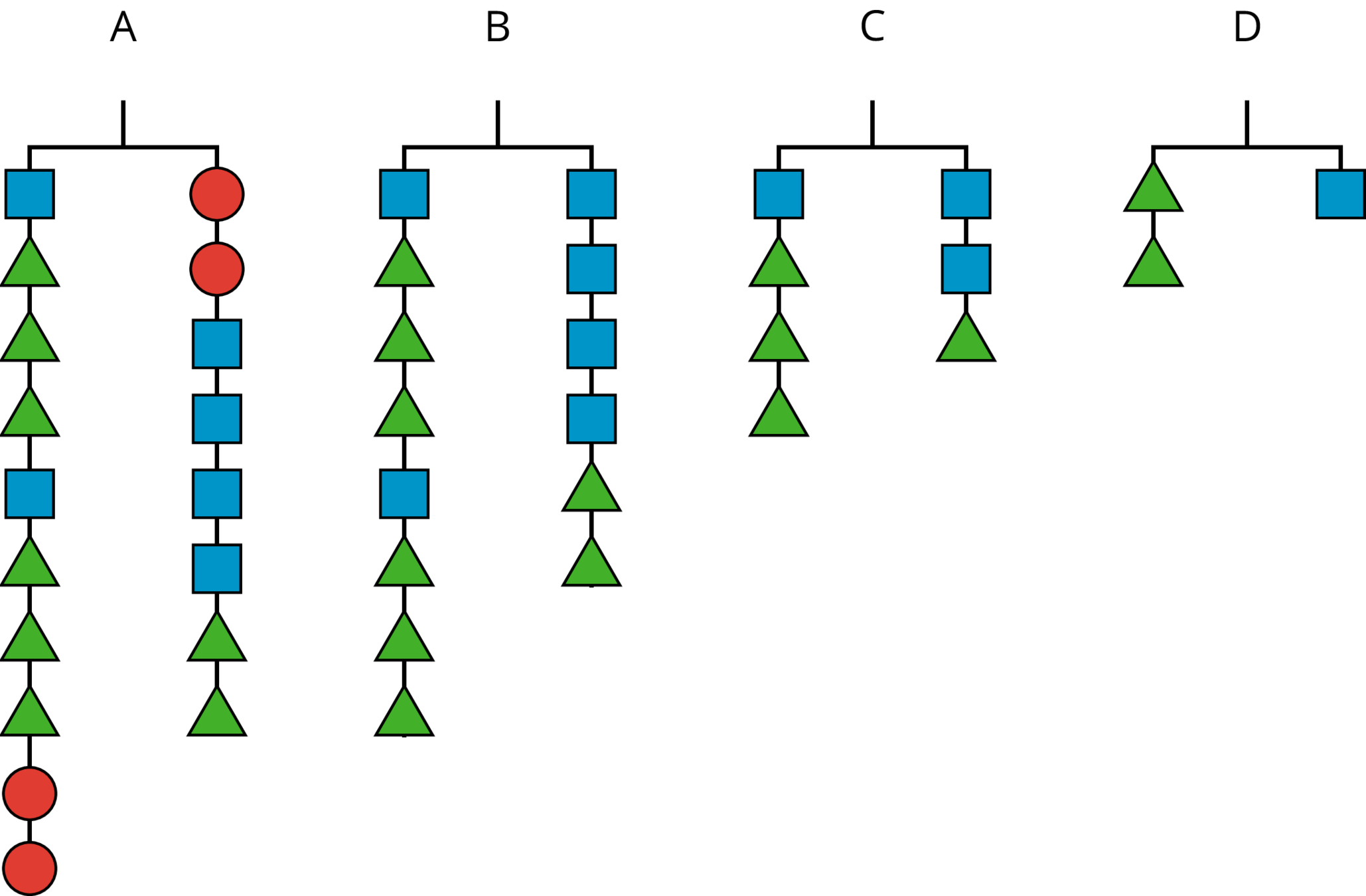An equation tells us that two expressions have equal value. For example, if $4x+9$ and $\text-2x-3$ have equal value, we can write the equation
$$4x + 9 = \text-2x - 3$$
Earlier, we used hangers to understand that if we add the same positive number to each side of the equation, the sides will still have equal value. It also works if we add negative numbers! For example, we can add -9 to each side of the equation.
\(\begin{align} 4x+9+\text-9 &= \text-2x-3+\text-9 &&\text{add $\text-9$ to each side}\\ 4x &= \text-2x-12 && \text{combine like terms} \end{align}\)
Since expressions represent numbers, we can also add expressions to each side of an equation. For example, we can add $2x$ to each side and still maintain equality.
\(\begin{align} 4x+2x &= \text-2x-12 +2x && \text{add $2x$ to each side} \\ 6x &= \text-12 && \text{combine like terms} \end{align}\)
If we multiply or divide the expressions on each side of an equation by the same number, we will also maintain the equality (so long as we do not divide by zero).
\(\begin{align} 6x\boldcdot \frac16=\text-12\boldcdot \frac16 && \text{multiply each side by }\frac16 \end{align}\)
or
\(\begin{align} 6x\div6=\text-12\div6 && \text{divide each side by 6} \end{align}\)
Now we can see that $x = \text-2$ is the solution to our equation.
We will use these moves in systematic ways to solve equations in future lessons.
